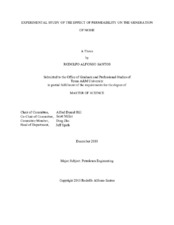| dc.description.abstract | Recent developments in fiber sensing systems have led to their application in the field of petroleum engineering, particularly production monitoring, and stimulation operation diagnosis. The spatially distributed and temporally continuous monitoring which fiber optic sensing technologies offers allows for a wealth of information to be ascertained including acoustic, strain, temperature, and microseismic data. However, there are challenges, in particular data handling, interpretation, and data quality assurance have been issues facing the wide spread adoption and implementation of fiber optic sensing technologies.
Many fiber optic service companies have developed analysis, and interpretation methods for fracture fluid distribution during stimulation operations, as well as production allocation methods while other companies have struggled with interpretation of flow through various subsurface structures and fixtures used during stimulation operations. Understanding of the effects of porous media on the generated acoustic signal is paramount to the development of interpretation and analysis methods for production monitoring, and stimulation diagnosis.
The purpose of this work was to build upon previous studies done on flow through a parallel plate fracture cell into a simulated wellbore. In particular, the work performed was to investigate the effect which proppant pack permeability has on the generated acoustic signal through the simulated fracture and further refine the empirical correlation put forth by Chen (2015). Results from this study showed that there is a dependence on the permeability of the proppant pack. The A correction value in the correlation put forth by Chen increases as the proppant pack permeability decreases, and isn’t influenced by the Reynolds number pointing to a dependence on the pore structure of the proppant pack. | en |


